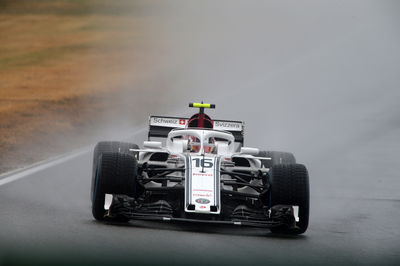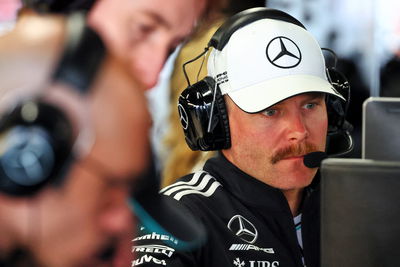The F1 tech surprises at the German GP
The return of the Hockenheimring is a welcome one for most F1 fans, and it should hopefully provide some close racing. The circuit has tended to bring out the best characteristics in every car over the years, as time can easily be gained – or lost – over each part of the track.
As such there are less compromises that need to be made to improve overall lap time and the teams can play to their car’s strengths. This bodes well for a three-way fight at the front and a packed midfield.
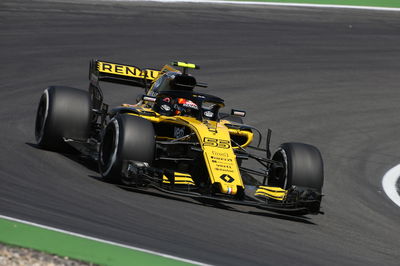
The return of the Hockenheimring is a welcome one for most F1 fans, and it should hopefully provide some close racing. The circuit has tended to bring out the best characteristics in every car over the years, as time can easily be gained – or lost – over each part of the track.
As such there are less compromises that need to be made to improve overall lap time and the teams can play to their car’s strengths. This bodes well for a three-way fight at the front and a packed midfield.
So far, this weekend has been a surprising one on the tech front, with a number of teams focusing on concepts that will be scrapped from next year onwards. While there are plenty of resources within a Formula 1 team to run car development programs in parallel, 2019 – along with its significant regulation changes – are looming, so it is fascinating to see the effort put into these latest updates at both the top and bottom end of the field.
Renault
Quietly keeping tabs on the top four throughout the year so far, Renault have been working very hard on getting the R.S.18 to perform better in medium- and high-speed corners and how the car behaves as it enters such turns. No less than four front wing iterations were available to test in Austria, but these featured only geometry changes to the inboard flaps and different locations for the flap angle adjuster.
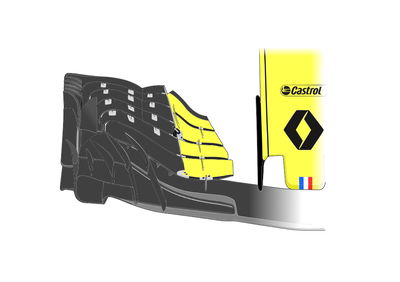
For Germany, the team have now gone one step further and introduced a very different wing, appearing outwardly very different to its predecessors but still very much following the philosophy they have honed over the past few seasons.
Changes have been made predominantly to the upper flap layout, with the amount of total elements (eight), outboard section and cascade winglets carried over. The adjustable section of the flaps – in yellow, conveniently – has been shortened significantly, creating a larger permanent outboard area that is crinkled to better influence the airflow around the front tyre; this perfectly illustrates how much of the wing is actually need to vary the level of downforce it creates, and how the rest of the wing is simply there to control the air over the rest of the car.
Renault have also divided the endplate vane at the trailing edge into four smaller flicks, an idea that is slowly building traction across the grid after Mercedes introduced it to their car last year. Changes to the endplate are often associated with generating more outwash around the front tyre, and these miniature vanes are no exception. From 2019 the endplate assembly can only consist of one vertical vane and a simple footplate, but this hasn’t prevented Renault from pushing the limits with its new design despite it being introduced at the midpoint of the current season.
Williams
Sticking with the front wing theme, Williams have brought to Hockenheim what could be a pivotal component to their recovery. Last time out at Silverstone turned out to be one of the lowest points of their year after suffering from excessive stalling issues at the back end of the car upon corner entry, however a new front wing design – which has been in the making for some time and is not necessarily a reaction to what occurred two weeks ago – aims to address the FW41’s erratic behaviour.
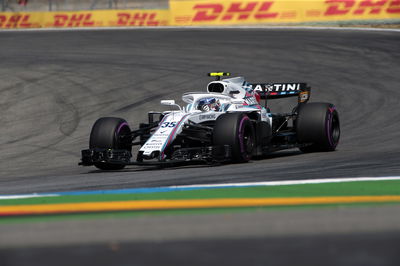
As has been mentioned on many occasions, the front wing is responsible for setting up the airflow over the rest of the car. If the flow becomes inconsistent over sensitive areas then the car can lose downforce suddenly and unexpectedly. In recent years most teams carry over their general front wing design year on year and evolve the rest of the car to suit – unless there is a major concept change there is little reason to alter the wing geometry. For example, Mercedes haven’t fundamentally changed their front wing since China 2015; it’s got wider and delta-shaped since 2017, but that’s about it.
Williams, however, sort of did things the other way round for 2018, opting to make extensive changes to the car’s aerodynamics and cooling while leaving the front wing be. While there are other causes contributing towards to their performance blight, this is perhaps one of the more predominant areas that requires immediate focus.
The new wing has a number of subtle design cues from Mercedes – which is perhaps unsurprising given Paddy Lowe’s contributions to the team thus far – and Ferrari. The standout changes are to the tunnelled outboard section, which has been replaced by a much less sinuous leading edge to greet the air, while the inboard area has had a few minor tweaks to alter the characteristics of the Y250 vortex.
The team will have been able to begin to understand how the front wing interacts with the rest of the car from Friday running. The wing, bargeboards and floor – on both sides of the car – were completely doused with Flo-Vis paint for much of FP1, from which pictures can be taken and sent back to the factory for further inspection as to how the air is behaving.
Ferrari
Ferrari are a team that will happily take the development war down to the wire if they have to, thanks to their superior amount of resources both financially and in personnel. Such are the efforts that the Scuderia are going to in reclaiming the title for the first time in 11 years that they are now venturing down a development avenue that will be completely shut off for 2019 – exhaust-blown rear wings.
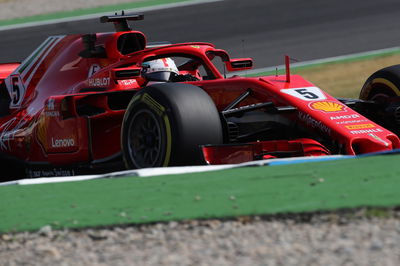
Renault have paved the way in this area so far, but with the FIA quick to pounce on the situation it hasn’t been quite the battleground we were expecting after winter testing. It takes time to develop a solution that is not only aerodynamically and mechanically sound, but also integrated well with the engine mapping to maximise its effect without compromising the performance of the power unit in other ways.
Ferrari’s solution is a bit compromised due to the challenges in raising the single exhaust outlet towards the underside of the rear wing. This requires a rethink of the wing supports, any radiators lying along the centreline of the car, the rear suspension layout and even the car’s centre of gravity. The easiest way to begin exploiting the exhaust blowing effect is to reposition the two wastegate pipes, which is exactly what Ferrari have done by stacking them vertically on top of eachother above the exhaust exit.
The stacked wastegate pipes were testing in conjunction with a revised rear wing with changing camber along its centre to suit. This wing was first seen in testing after the Spanish Grand Prix, so this idea has been brewing for a while it seems. Perhaps we will see this package at high downforce venues to come, the next one of course being Hungary in just a week's time.
